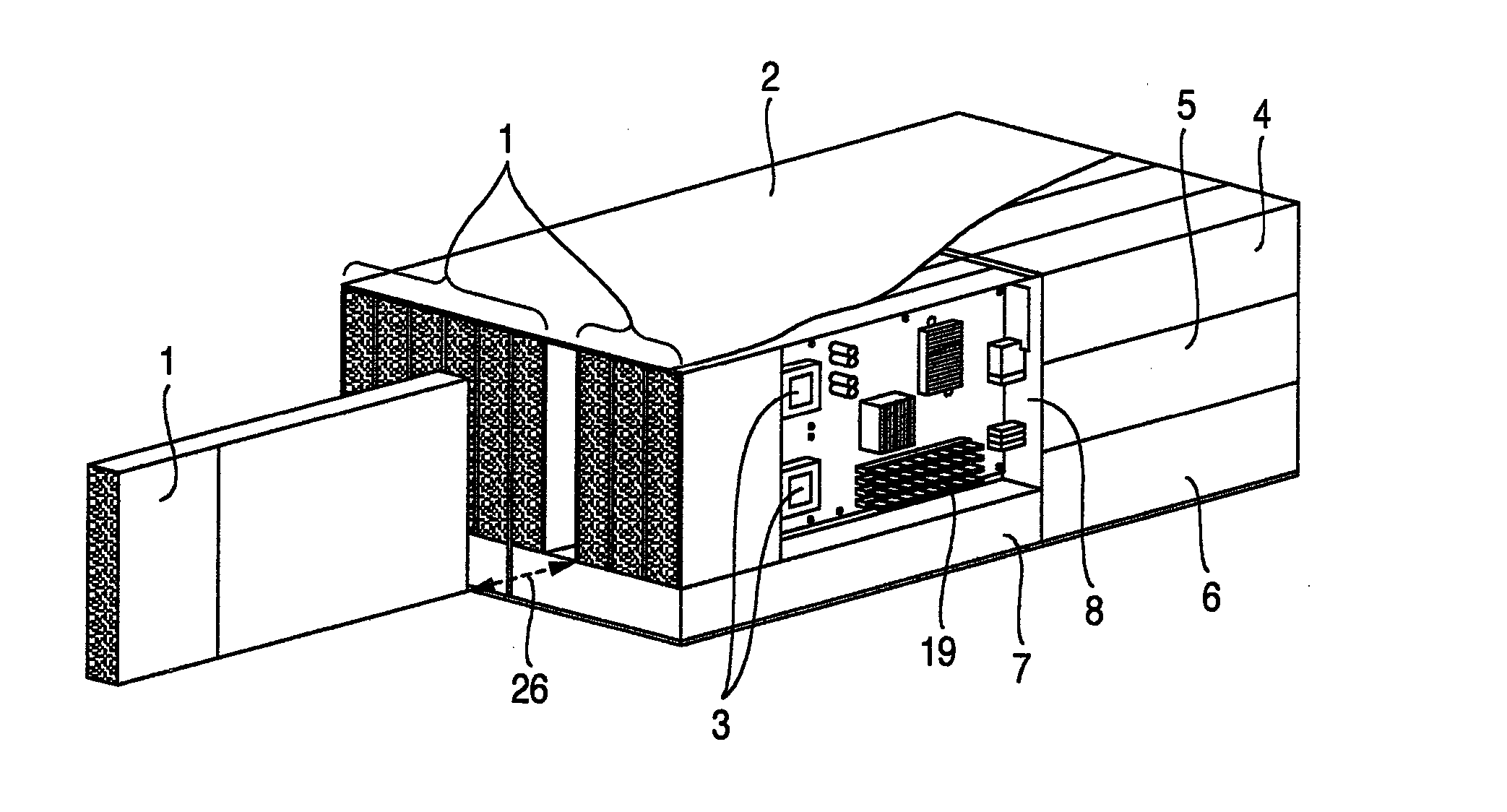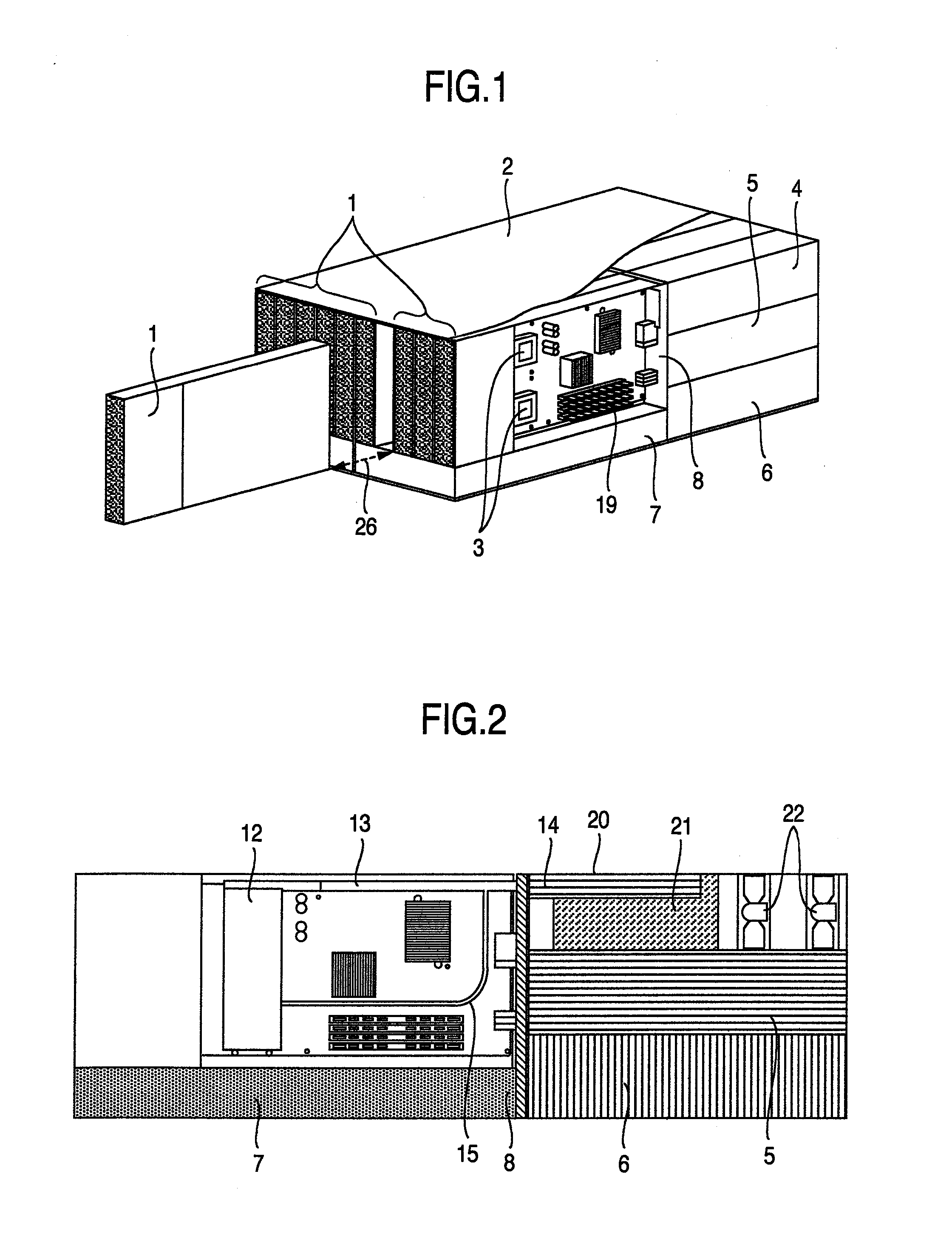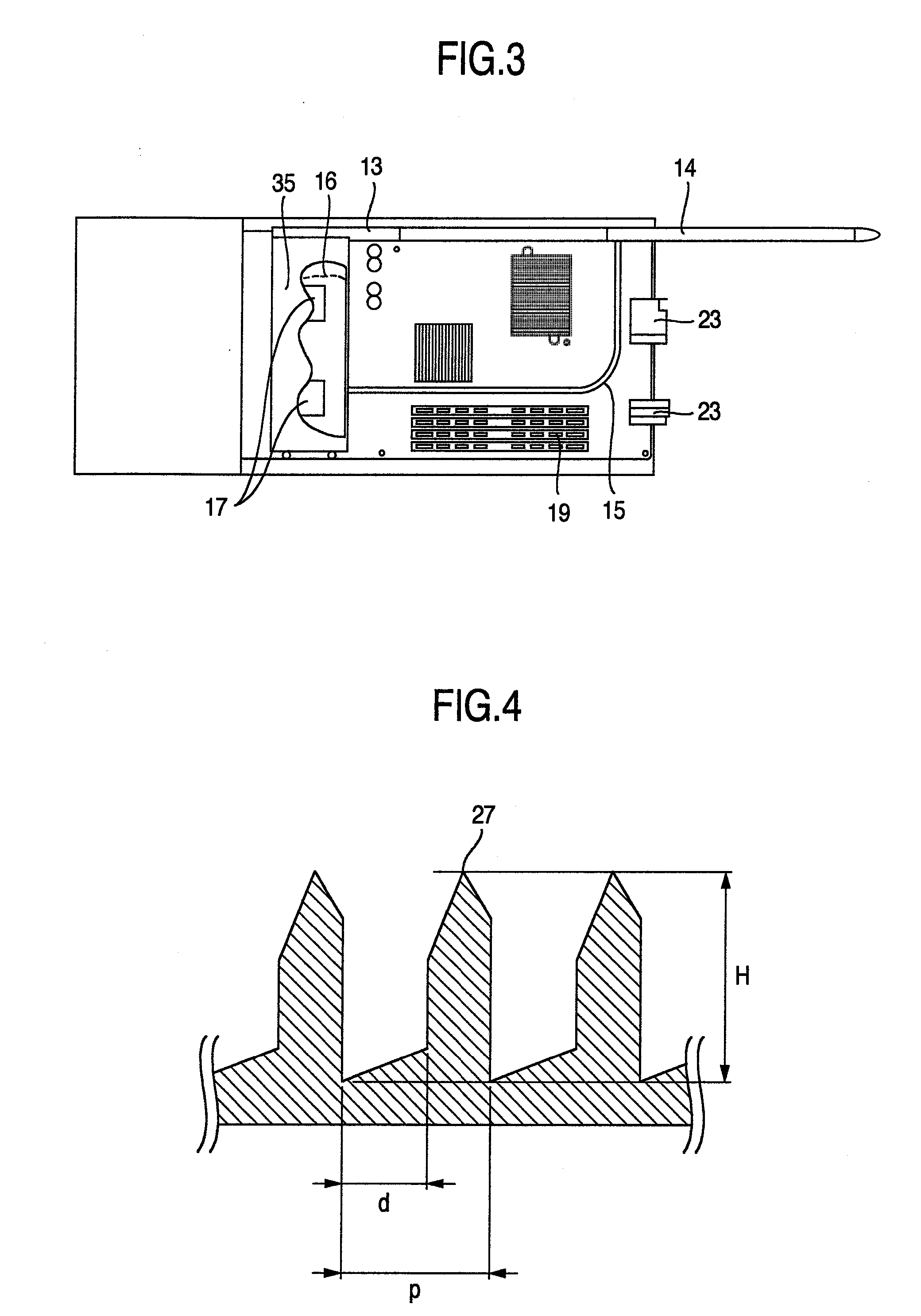Cooling device and electronic equipment including cooling device
a cooling device and electronic equipment technology, applied in lighting and heating apparatus, electric apparatus casings/cabinets/drawers, instruments, etc., can solve the problems of large constraints on the mounting place, the size of the heat radiation fins of the cpu attached to the blade, and the difficulty of loading a high-performance cpu with a large amount of heat generation on the blade, so as to reduce the thermal resistance and improve the maximum heat transport amount performance.
- Summary
- Abstract
- Description
- Claims
- Application Information
AI Technical Summary
Benefits of technology
Problems solved by technology
Method used
Image
Examples
embodiment 1
[0063]FIG. 1 is a perspective view for explaining a schematic configuration of an ordinary blade server.
[0064]In FIG. 1, the blade server is configured by a server device which is called a thin blade 1 constituted of necessary elements as a computer such as a CPU 3, a memory 19 and an HDD, and what is called a chassis 2 which is mounted with a plurality of blades and constituted of devices and the like which perform power supply to the blades, and perform input and output of information to and from an external part, such as a LAN. Though the details are not illustrated, in the chassis 2, a fan unit 4 loaded with a fan for cooling the entire blade server, an I / O unit 5 to be an interface for performing input and output of information to and from the external part such as a LAN, a power supply unit 6 which performs power supply, a system unit 7 which performs management of the blade and the like are electrically connected by a back plane 8. By adopting these configurations, the blade ...
embodiment 2
[0095]FIG. 7 is a partial perspective view of a vapor condensing pipe including another embodiment.
[0096]In FIG. 7, the flow of vapor and the flow of condensate liquid flowing in the wick 9 are opposed to each other in the structure of embodiment 1. The condensate liquid returns to the working fluid chamber 35 (shown in FIG. 3) by the capillary force of the wick 9 even under the influence of the flow of vapor, but in order to increase the maximum heat transport amount more, it is desirable to reduce the influence as much as possible. Thus, in the present embodiment, in the vapor condensing pipe 14 shown in embodiment 1, a partition plate 24 having a partition plate opening 25 is provided on the top surface of the wick 9 of the internal structure of the vapor condensing pipe 14, so that the flow of the vapor does not influence the flow of the condensate liquid in the wick 9.
[0097]In the structure of the present embodiment, the liquid which is condensed in the fins flows to the wick 9...
embodiment 3
[0099]FIG. 8 is a sectional view of a heat pipe including still another embodiment.
[0100]In FIG. 8, in the structure of the vapor condensing pipe 14 shown in embodiment 1, the flow of vapor and the flow of the condensate liquid flowing in the wick 9 are opposed to each other. Thus, an inner vapor pipe 28 is provided inside the vapor condensing pipe 14 via a spacer 34 so as to form the structure in which the vapor from the vapor pipe 13 passes through the inner vapor pipe 28 and is released to the end of the vapor condensing pipe 14. Thereby, the vapor released from the inner vapor pipe 28 flows to the condensate liquid return pipe 15 from the tip end of the heat pipe, and the flow of the vapor is parallel with the flow of the condensate liquid flowing in the wick 9. Therefore, the flow of the condensate liquid flowing in the wick 9 is promoted by the flow of the vapor, and the draining performance to the condensate liquid return pipe 15 is enhanced, which results in increase in the ...
PUM
 Login to View More
Login to View More Abstract
Description
Claims
Application Information
 Login to View More
Login to View More - R&D
- Intellectual Property
- Life Sciences
- Materials
- Tech Scout
- Unparalleled Data Quality
- Higher Quality Content
- 60% Fewer Hallucinations
Browse by: Latest US Patents, China's latest patents, Technical Efficacy Thesaurus, Application Domain, Technology Topic, Popular Technical Reports.
© 2025 PatSnap. All rights reserved.Legal|Privacy policy|Modern Slavery Act Transparency Statement|Sitemap|About US| Contact US: help@patsnap.com



